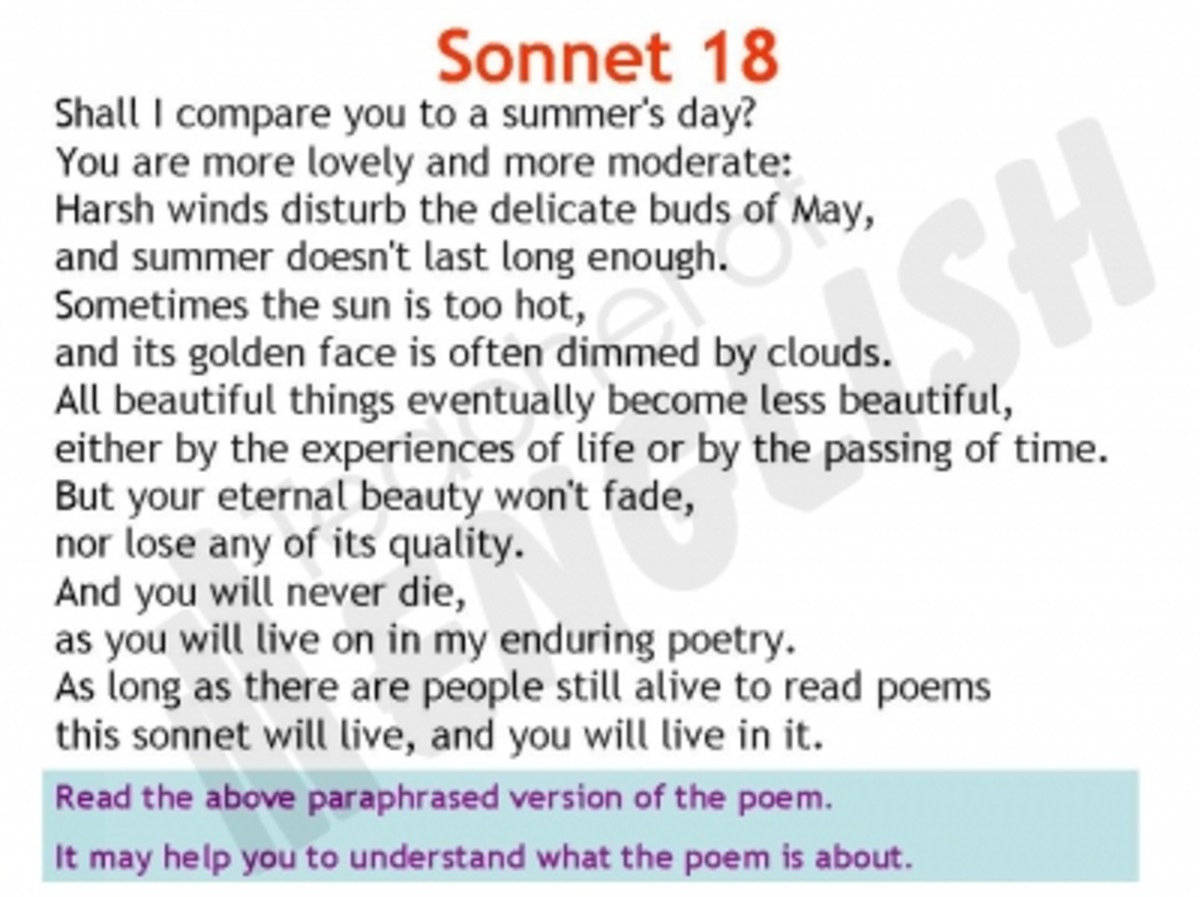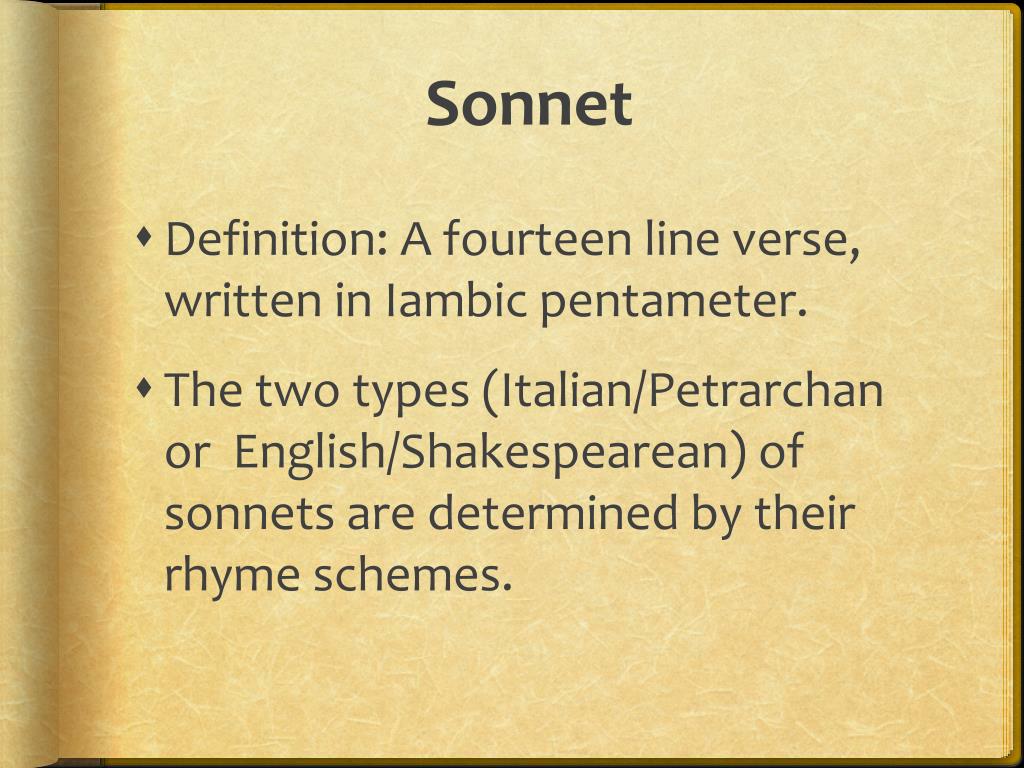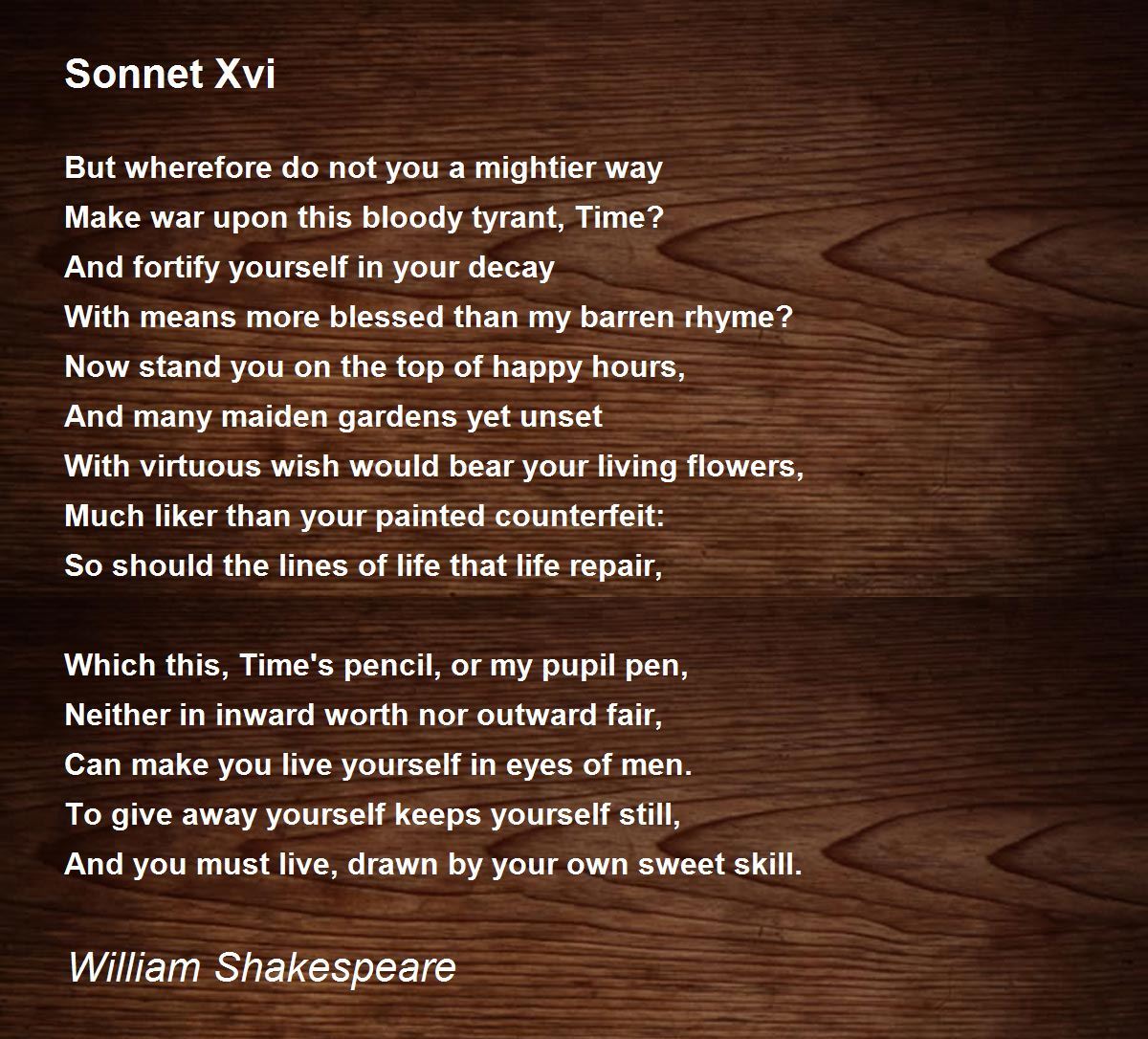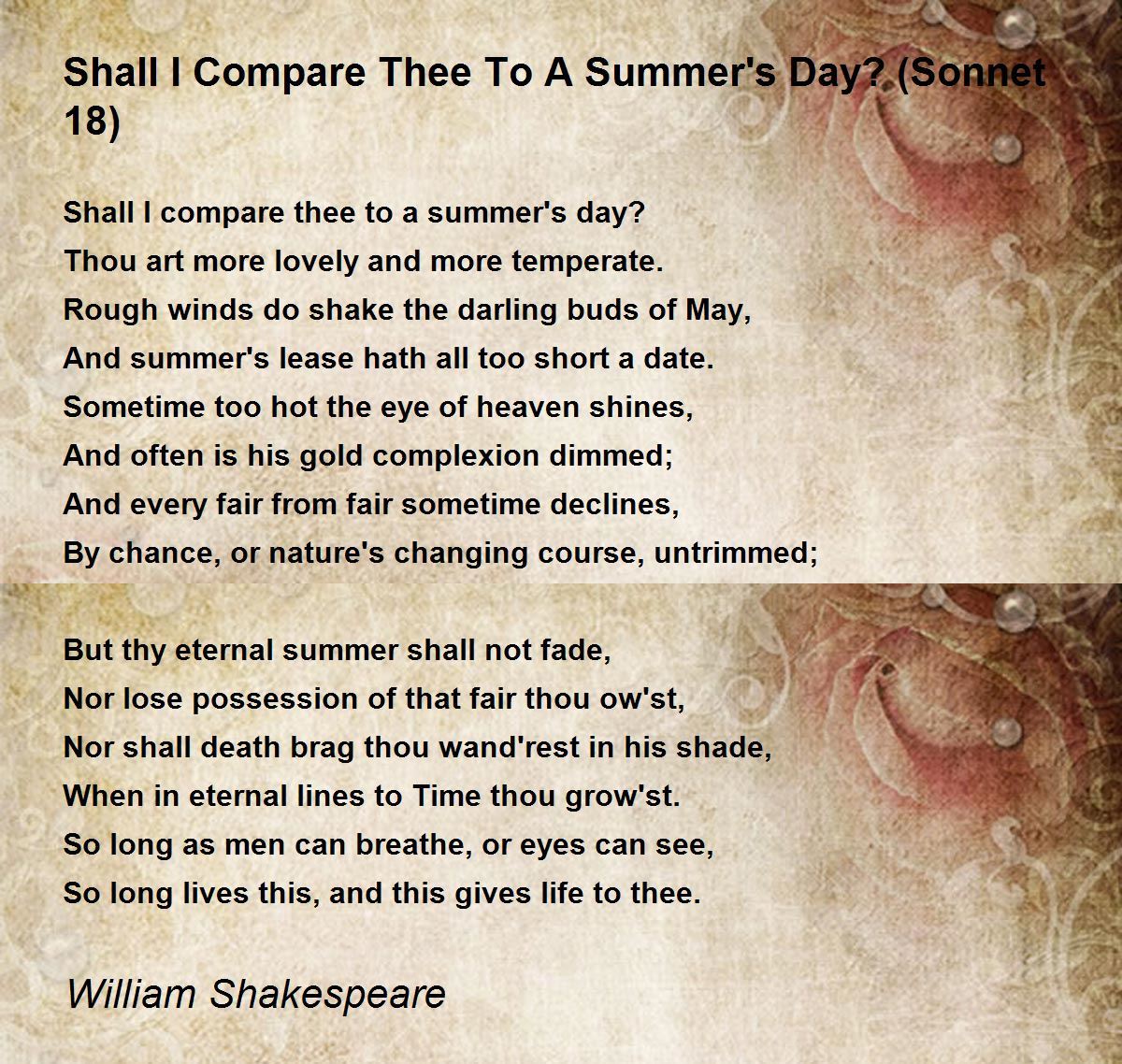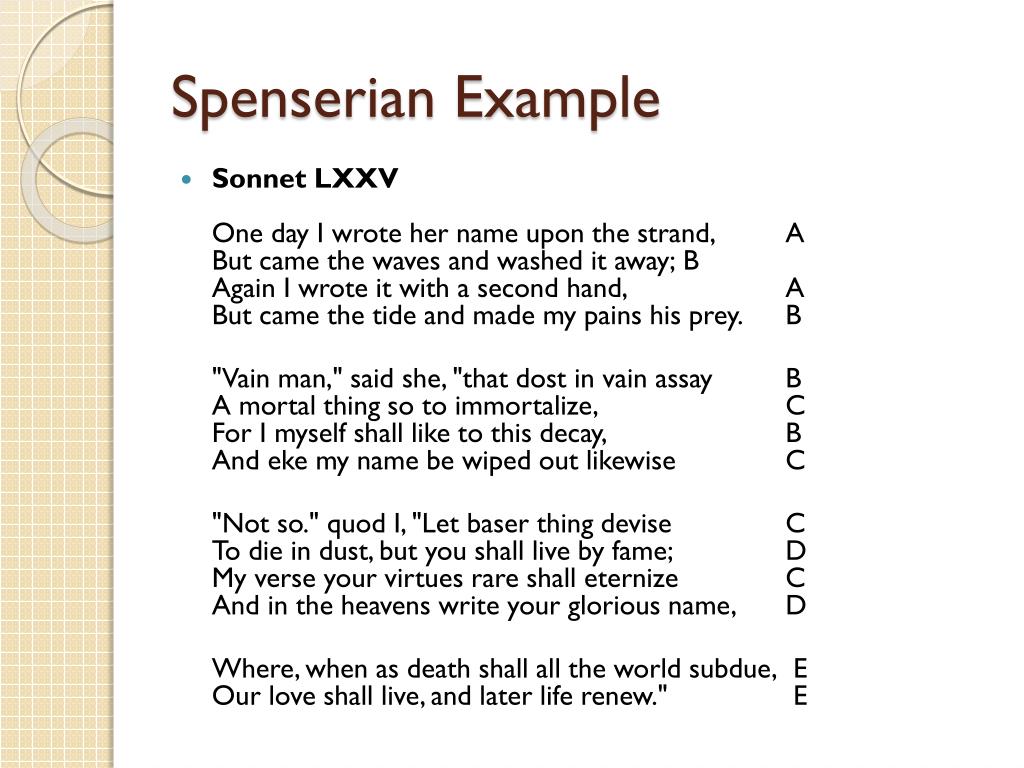Sonnet Poem Presentation
| Introduction to Sonnet Poems | ||
|---|---|---|
| A sonnet is a 14-line poem that follows a specific rhyme scheme and structure. It originated in Italy during the Renaissance and gained popularity in English literature. Sonnets are often used to express deep emotions, explore love, and contemplate philosophical ideas. | ||
| 1 | ||
| Types of Sonnet Poems | ||
|---|---|---|
| There are two main types of sonnets: the Italian (Petrarchan) and the English (Shakespearean). Italian sonnets consist of an octave (8 lines) followed by a sestet (6 lines) and have a specific rhyme scheme. English sonnets are composed of three quatrains (4 lines each) and a final couplet (2 lines) with a different rhyme scheme. | ||
| 2 | ||
| Structure of a Sonnet Poem | ||
|---|---|---|
| Sonnets are typically written in iambic pentameter, meaning each line has ten syllables with a stressed and unstressed pattern. The rhyme scheme of an Italian sonnet is usually ABBAABBA CDCDCD or ABBAABBA CDECDE, while an English sonnet follows ABABCDCDEFEFGG. The volta, or turn, occurs between the octave and sestet in Italian sonnets, and before the final couplet in English sonnets. | ||
| 3 | ||
| Themes Explored in Sonnets | ||
|---|---|---|
| Love and romance are common themes in sonnets, expressing both passionate and unrequited love. Sonnets also explore beauty, time, mortality, nature, and philosophical concepts. They often provide a deep insight into the human experience and evoke strong emotions in the reader. | ||
| 4 | ||
| Famous Sonnet Poets | ||
|---|---|---|
| William Shakespeare is one of the most well-known sonnet writers, with his collection of 154 sonnets. Petrarch, an Italian poet, is credited with popularizing sonnets in the 14th century. Other notable sonnet poets include John Donne, Elizabeth Barrett Browning, and Edna St. Vincent Millay. | ||
| 5 | ||
| Sonnet Examples | ||
|---|---|---|
| "Shall I compare thee to a summer's day?" - Sonnet 18 by William Shakespeare. "How do I love thee? Let me count the ways." - Sonnet 43 by Elizabeth Barrett Browning. "When, in disgrace with fortune and men's eyes..." - Sonnet 29 by William Shakespeare. | ||
| 6 | ||
| Importance of Sonnet Poems | ||
|---|---|---|
| Sonnets are considered a significant form of poetry due to their strict structure and challenging rhyme scheme. They require careful craftsmanship and precision in conveying complex ideas within a limited number of lines. Sonnets have influenced and inspired countless poets, contributing to the development of poetry throughout history. | ||
| 7 | ||
| Modern Adaptations of Sonnets | ||
|---|---|---|
| While sonnets originated centuries ago, they continue to be adapted and used by contemporary poets. Modern sonnets may experiment with the traditional structure, rhyme scheme, or subject matter. Sonnets are also commonly used in song lyrics, providing a lyrical and rhythmic quality to the music. | ||
| 8 | ||
| Tips for Writing a Sonnet Poem | ||
|---|---|---|
| Familiarize yourself with the different types of sonnets and study examples from renowned poets. Plan your rhyme scheme and structure before starting to write. Use vivid imagery, metaphors, and similes to convey your emotions or ideas effectively. | ||
| 9 | ||
| References (download PPTX file for details) | ||
|---|---|---|
| Shakespeare, W. (1609). The Sonnets.... Browning, E. B. (1850). Sonnets from the Port... The Poetry Foundation. (n.d.). Sonnet. Retrie... |  | |
| 10 | ||
